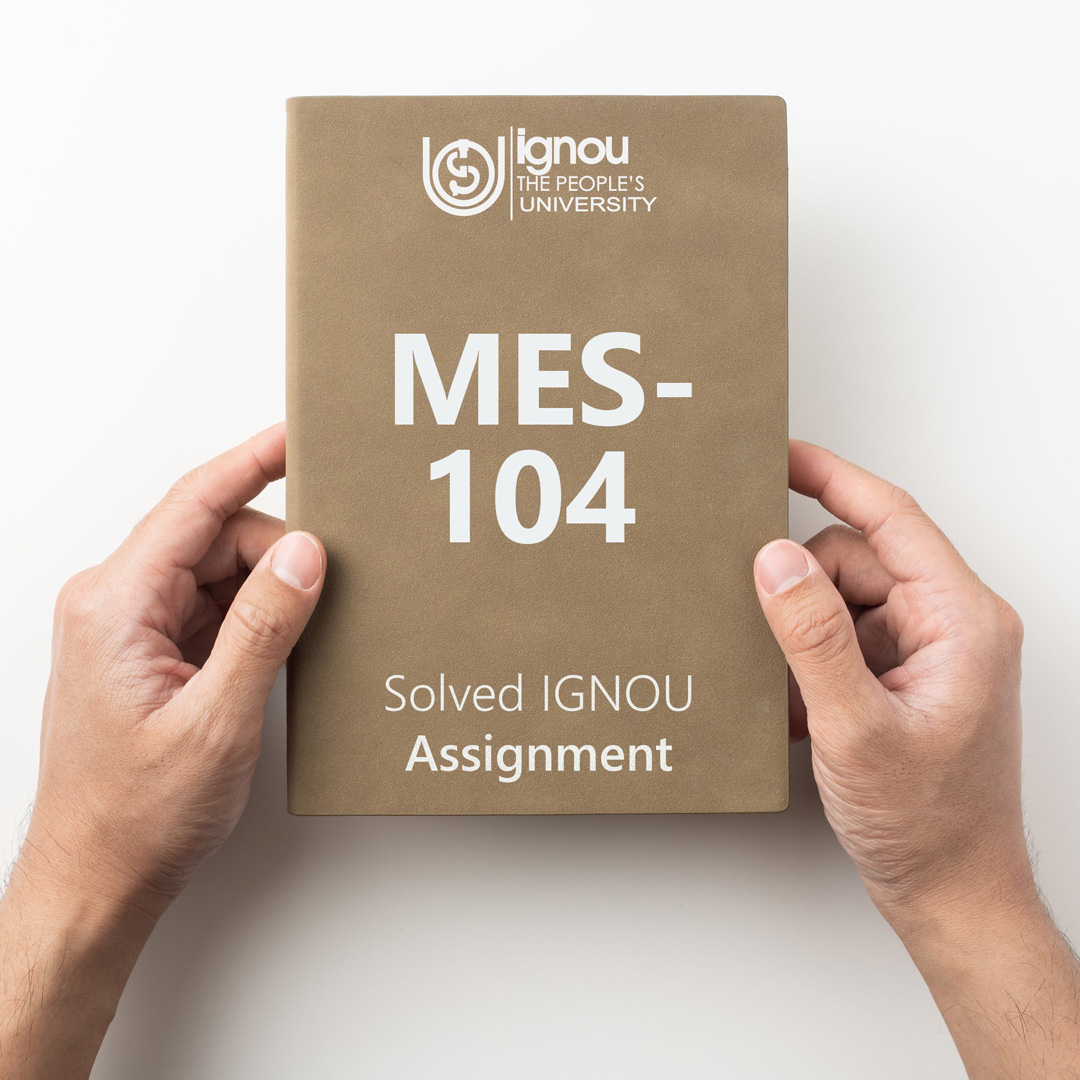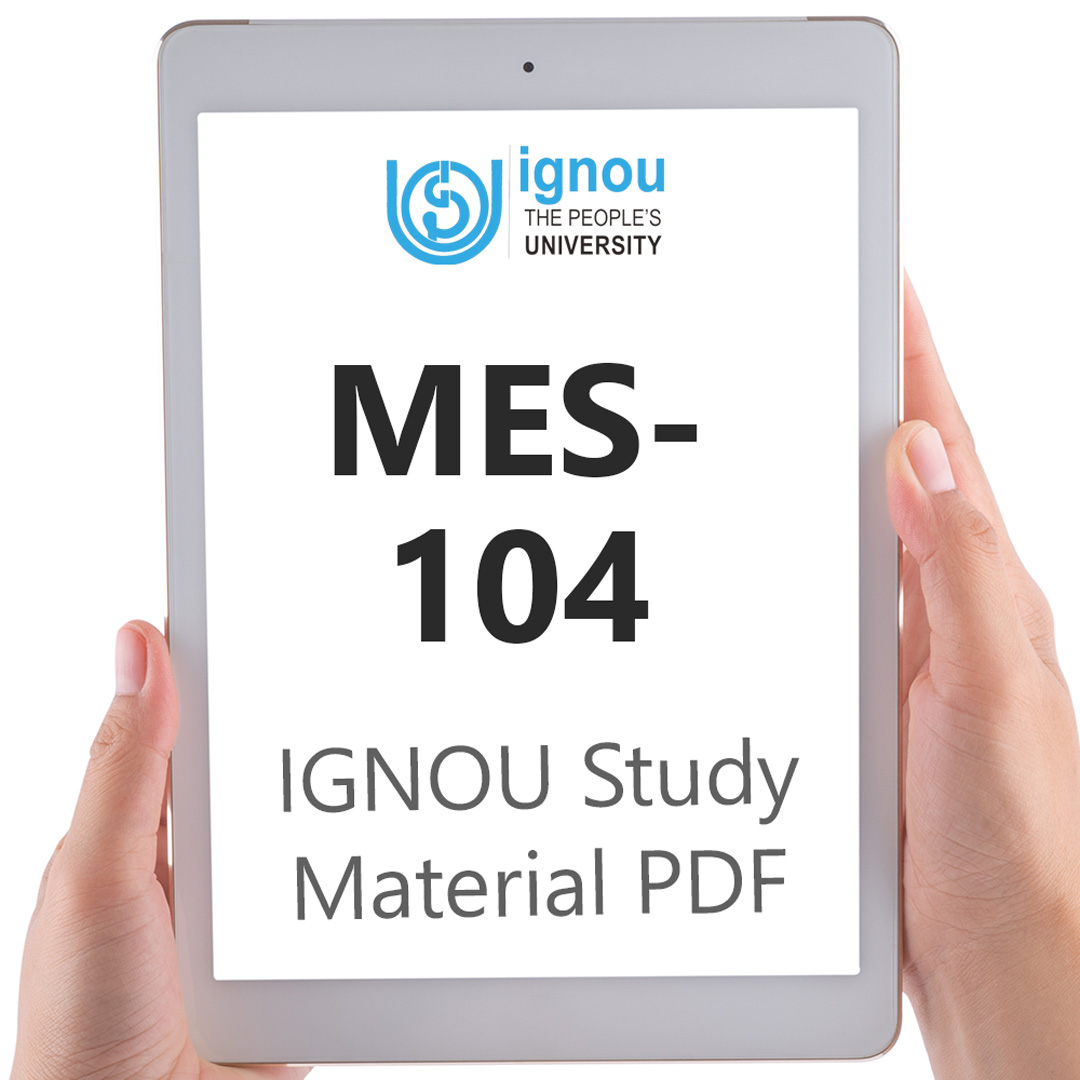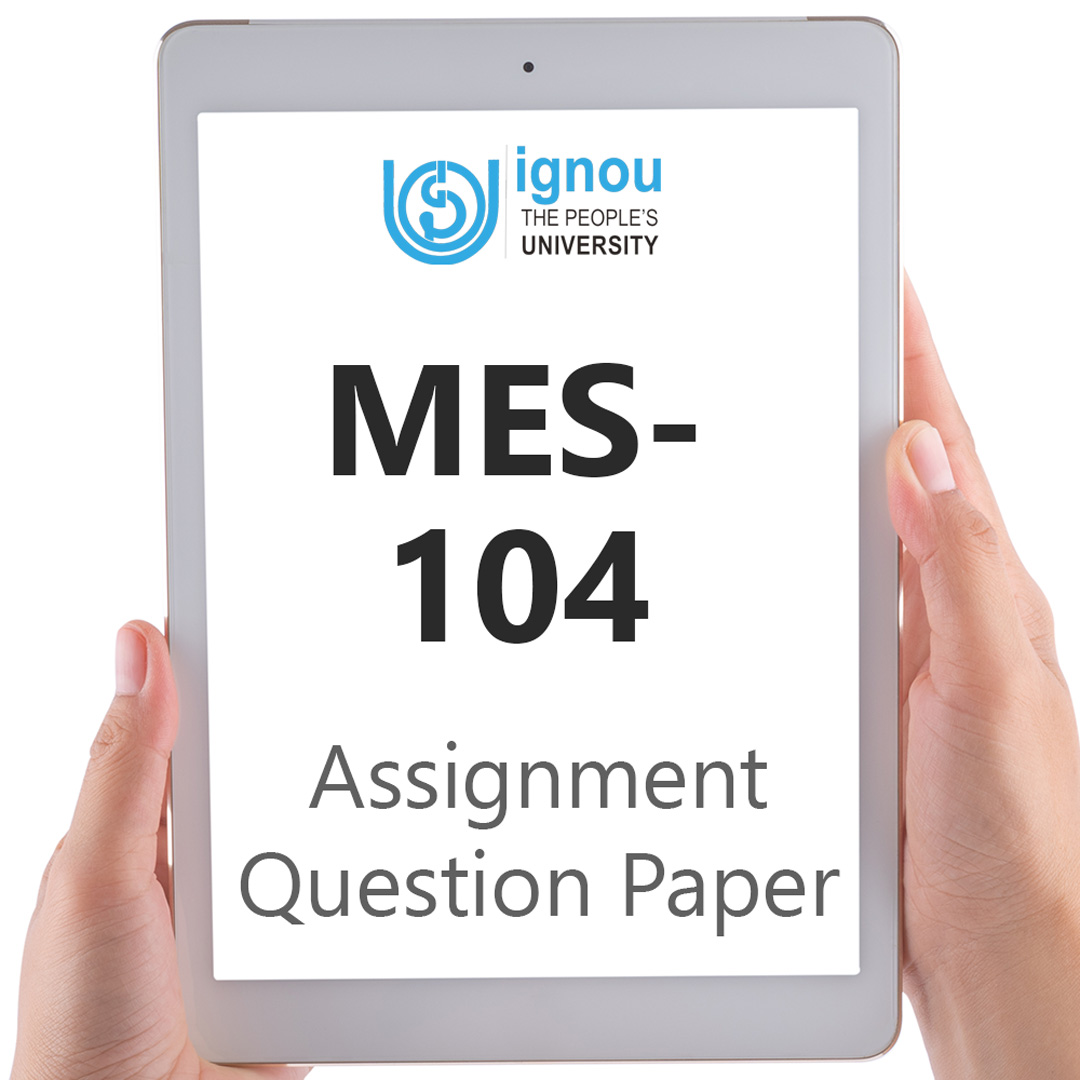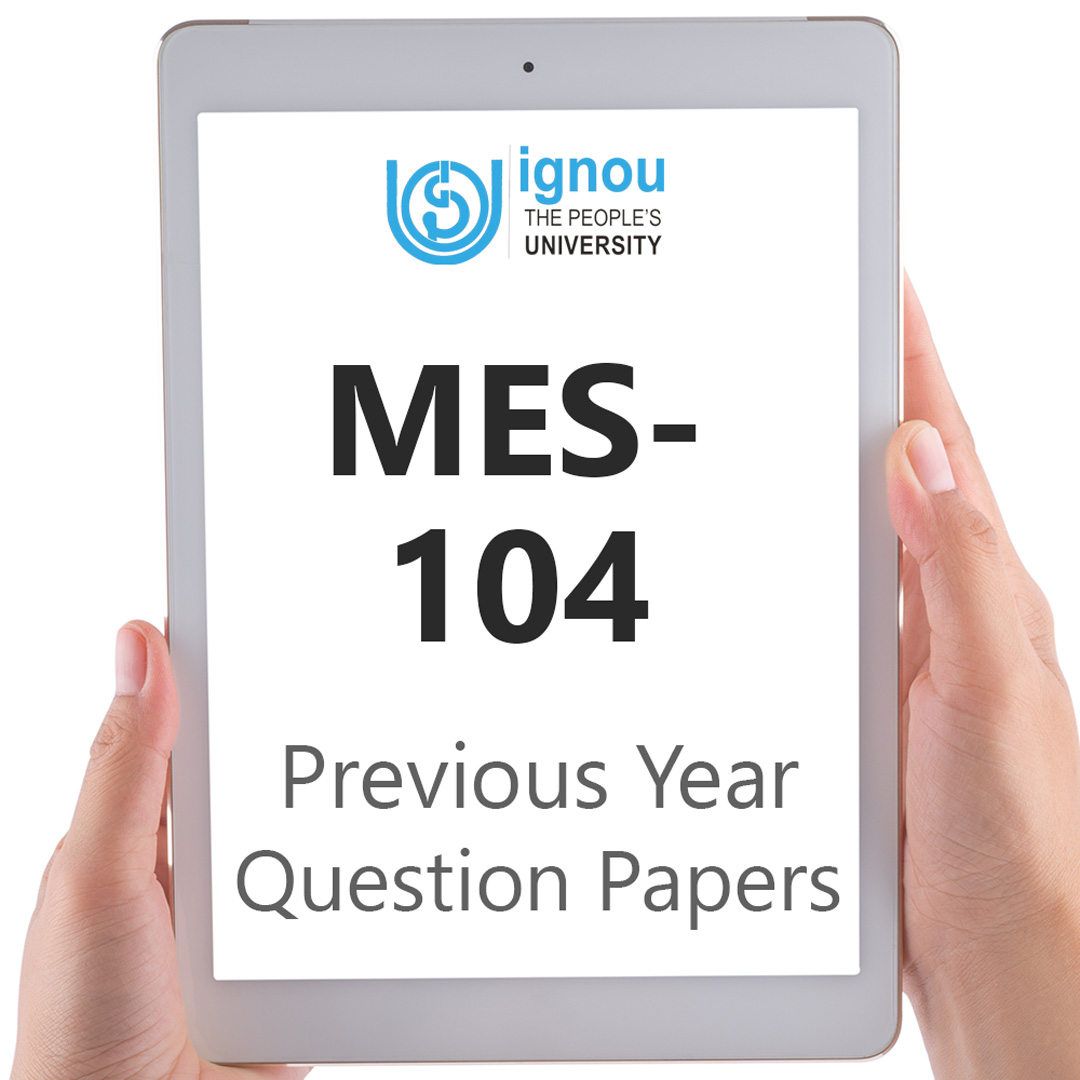If you are looking for MES-104 IGNOU Solved Assignment solution for the subject Planning and Management of Higher Education, you have come to the right place. MES-104 solution on this page applies to 2023 session students studying in MAEDU, PGDHE courses of IGNOU.
MES-104 Solved Assignment Solution by Gyaniversity
Assignment Code: MES-104/TMA/2023
Course Code: MES-104
Assignment Name: Planning and Management of Higher Education
Year: 2023
Verification Status: Verified by Professor
a) ‘Autonomy and accountability are two sides of the same coin.’ Discuss the statement in the context of a college or a university with which you are familiar. (500 Words)
Ans) Both autonomy and accountability are crucial components of every educational setting, and they are inextricably linked. Autonomy cannot exist without accountability. The ability of a system or organisation to make choices and move forward with activities in accordance with its own aims and priorities is referred to as autonomy. Accountability, on the other hand, is the responsibility that an institution has to ensure that its decisions and actions are in line with its goals and objectives, as well as that they are transparent and accountable to the institution's stakeholders. Accountability refers to the responsibility that an institution has.
When it comes to the academic setting of a college or university, my experiences have shown me that autonomy and accountability are two sides of the same coin. This is something that I have learned through my own personal experiences. This organisation boasts a high degree of autonomy, which denotes that it is free to make decisions and conduct actions based on its own set of objectives and goals as long as it does so in accordance with its own principles. The educational institution is the party responsible for conceiving of and carrying out the implementation of high-quality educational programmes that are adapted to meet the needs of the institution's students as well as those of any other stakeholders.
Having said that, this autonomy does not come without responsibility. It is the responsibility of the institution to ensure that the decisions it makes and the actions it takes are transparent, responsible, and in line with its goals and objectives. The institution is accountable to its stakeholders, which include students, faculty, staff, and the wider community. The institution is obligated to demonstrate that it is meeting its goals and objectives by providing regular reports on its activities and accomplishments to its stakeholders, which includes the regulatory authorities. These reports are required on a regular basis.
For instance, the educational establishment that I am aware with possesses its own independent academic council. This council is in charge of establishing academic standards as well as creating and implementing academic programmes. However, the governing body of the institution holds this council accountable for its decisions and actions. The governing body is responsible for ensuring that the council's decisions and actions are in keeping with the goals and objectives of the institution. To ensure that the institution is fulfilling its commitments as a provider of higher education and to be accountable to the regulatory authorities and the larger community, the governing board is responsible for ensuring that the institution is meeting its obligations.
In summary, autonomy and accountability are two essential aspects of any educational institution. In the context of the college or university that I am familiar with, autonomy provides the institution with the freedom to make decisions and take actions based on its own goals and objectives, while accountability ensures that the institution is responsible, transparent, and accountable to its stakeholders. The institution must balance autonomy and accountability to ensure that it is delivering high-quality educational programs that meet the needs of its students and stakeholders while also meeting its obligations as a provider of higher education.
b) Explain the mechanism of managing and developing human resources in an institution of higher education. (500 Words)
Ans) Managing and developing human resources in an institution of higher education is a complex process that involves various strategies and mechanisms. The human resources in an educational institution include faculty, staff, and administrators, who play a critical role in ensuring the success and sustainability of the institution. The following are some of the key mechanisms of managing and developing human resources in an institution of higher education:
Recruitment and Selection: Recruitment and selection are critical processes in managing and developing human resources in an educational institution. The recruitment process involves identifying and attracting potential candidates for faculty, staff, and administrative positions. The selection process involves evaluating the candidates' qualifications, skills, and experiences to determine their suitability for the position.
Orientation and Training: In order to effectively manage and develop the human resources available at a higher education institution, orientation and training are critical components. New workers are given an overview of the institution's policies, processes, and culture during the orientation seminars that are offered. Training programmes assist individuals in acquiring the skills and information necessary to properly carry out the obligations associated with their jobs.
Performance Management: In an educational institution, performance management is a system that is essential for both managing human resources and developing those resources. Specifically, it entails establishing performance expectations, delivering feedback, and conducting performance evaluations. Employees are better able to grasp what is required of them, and they are given opportunity to expand their knowledge and skills as a result of performance management.
Professional Development: The cultivation of an educational institution's human resources is made possible, in large part, through professional development opportunities. It involves making educational opportunities, training opportunities, and skill development opportunities available to employees at all times. Employees are able to improve their job performance and stay current with the most recent tendencies and technologies in their industry when they participate in professional development programmes.
Compensation and Benefits: When it comes to the management of human resources at an educational institution, compensation and benefits play an extremely important role. They make it easier to recruit and keep staff of a high calibre. Salaries, bonuses, health insurance, retirement plans, and other types of employee perks are all included in compensation and benefits packages.
Work-Life Balance: A healthy balance between work and personal life is one of the most important mechanisms for the management and development of human resources in educational institutions. It entails establishing a working environment that caters to the individual and familial requirements of employees. Included in programmes designed to promote work-life balance are provisions for flexible work arrangements, assistance with child and elder care, and wellness initiatives geared at staff members.
In summary, managing and developing human resources in an institution of higher education requires a combination of recruitment and selection, orientation and training, performance management, professional development, compensation and benefits, and work-life balance programs. These mechanisms help attract and retain high-quality employees, develop their skills and knowledge, and support their personal and family needs. An effective human resource management strategy is critical to the success and sustainability of an educational institution.
c) Suppose you are member of a curriculum planning group in the subject of your choice at college level. Describe the stages that your group would follow while planning the curriculum on the same subject. (500 Words)
Ans) As a member of a curriculum planning group in the subject of my choice at college level, the following are the stages that my group would follow while planning the curriculum:
Needs Assessment: Conducting a needs assessment of both the students and the industry is the first thing that should be done when designing a new course of study for a school. This includes analysing the trends and expectations of the industry, in addition to the information and abilities that students need to learn in order to be successful in the subject area.
Goal Setting: The next thing that needs to be done is to figure out what the desired results are, as well as the outcomes of the programme. The first step involved in this process is the necessary one of defining the learning outcomes that teachers want their pupils to have accomplished by the time the class is over.
Content Development: After the goals and objectives have been determined, the group in responsibility of developing the curriculum will then develop the course's material based on those goals and objectives. This comprises selecting and organising the topics, as well as any subtopics, that will be discussed during the course of the term of the course.
Instructional Design: During the stage of instructional design, you will be responsible for designing the various modes of instruction and learning that will be used in the delivery of the course content. These modes may include face-to-face instruction, online training, and hybrid instruction. This comprises the selection of acceptable teaching materials and technology as well as the development of exams to measure the learning of the students. Also included in this is the selection of relevant teaching materials and technology.
Implementation: The pupils will be provided with the curriculum that they are expected to follow at the stage that is known as "implementation." This involves the selection of and training for the instructors who will be giving the course, as well as the provision of the necessary materials and support for the educational aspirations of the students. In addition, this covers the delivery of the course itself.
Assessment and Evaluation: Assessment and evaluation come at the very end of the process of creating a curriculum. This involves evaluating the effectiveness of the curriculum in achieving the learning outcomes as well as the learning that has been achieved by the students. The curriculum will be revised and improved based on this feedback in order to prepare for future versions.
Throughout the process of curriculum planning, the group will be required to take into consideration a variety of factors, including the mission and vision of the college, accreditation standards, as well as the needs and expectations of various stakeholders, such as students, faculty, and industry partners.
In a nutshell, the process of curriculum planning at the college level entails a methodical workflow that includes a needs analysis, goal setting, the creation of material, the design of instructional activities, their execution, and finally, assessment and evaluation. Each step of the process is essential in order to guarantee that the educational programme will fulfil the requirements of both the students and the industry, as well as that the desired learning outcomes will be attained. To ensure that the curriculum is consistently getting better, the group in charge of planning should engage in ongoing evaluation and adjustment in addition to working together cooperatively.






